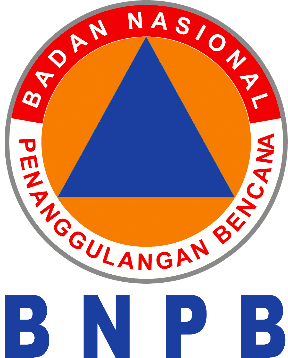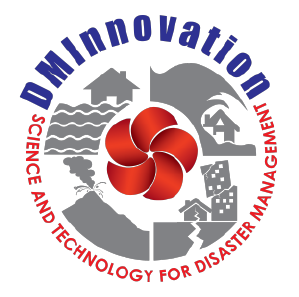Preface¶
Disclaimer¶
This document is initial draft and still in reviewing phase by these parties:
Badan Nasional Penanggulangan Bencana (BNPB)
Disaster Management Innovation (formerly AIFDR)
Humanitarian OpenStreetMap Team (HOT)
All contents and materials on this document possibly changed without public notice.
License¶

All contents and materials on this document is licensed as Creative Commons
Attribution Australia (CCbyA).
You are free:
to copy, distribute, display, and perform the work
to make derivative works
to make commercial use of the work
You must give the original author credit.
More information about CCbyA License:
About Us¶
Badan Nasional Penanggulangan Bencana (BNPB)

BNPB is Indonesia’s National Disaster Management Agency. BNPB is a non-departmental ministerial-level government agency, tasked with providing guidance and direction to the efforts of disaster management that includes disaster prevention, emergency response, rehabilitation, and reconstruction in a fair and equal. National Disaster Management Agency has the function as a policy maker, formulator, and Refugee (IDP) management to act quickly and appropriately and effectively and efficiently; and coordinating the implementation of disaster management activities in a planned, integrated, and comprehensive.
Disaster Management Innovation (formerly AIFDR)

Disaster Management Innovation is the new Australian Government aid investment delivered by Geoscience Australia in Indonesia. DMInnovation builds on the success of The Australia-Indonesia Facility for Disaster Reduction (AIFDR) which was a joint initiative between the governments of Australia and Indonesia. AIFDR was launched by the Australian and Indonesian governments at a special ceremony on 15 July 2010 and was officially closed in August 2015. DMInnovation will maintain the important scientific technical assistance program delivered in partnership between Indonesian science agencies and Geoscience Australia.
Humanitarian OpenStreetMap Team (HOT)

Free, collaborative maps are uniquely valuable to humanitarian work, especially in places where base map data is often scarce, out of date, or rapidly changing. OpenStreetMap is a web project to create a free and open map of the entire world, built entirely by volunteers surveying with GPS, digitizing aerial imagery, and collecting and liberating existing public sources of geographic data. The Humanitarian OpenStreetMap Team (HOT) is an initiative to apply the principles and activities of open source and open data sharing towards humanitarian response and economic development.
Preface¶
A Geographic Information System (GIS) is a system designed to enable people to work with data related to places on the Earth. A GIS allows the creation, storage, manipulation, and analysis of geographic data. GIS is a very broad concept and can involve complex hardware and software. But for most people’s purposes, a simple GIS software application is all that is required
GIS in general can be used for a variety of fields, including in disaster management. Unfortunately, the GIS software currently on the market are very expensive. Therefore we make a guide how to analyze the data with GIS software, which is free and open for the purposes of disaster management, particularly in the preparation of contingency plans.
The software used is QGIS (QGIS) is a Geographic Information System (GIS) that is user-friendly and open-source. InaSAFE is a free software and open-source, that can create realistic scenario of natural disasters impact for planning, preparation, and better response. InaSAFE is developed by AIFDR through consultation with BNPB.
Analyzing Data with QGIS and InaSAFE is designed to complement the previous unit to collect spatial data with OpenStreetMap for disaster management.
We hope it can be useful.